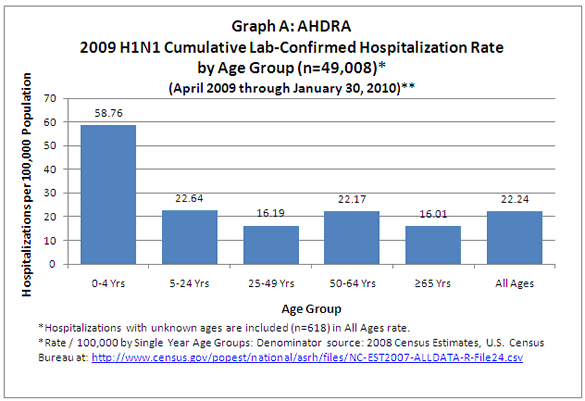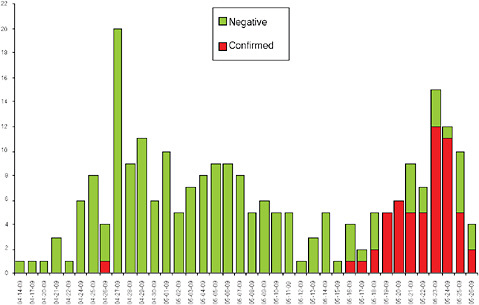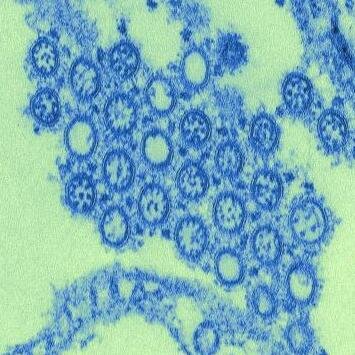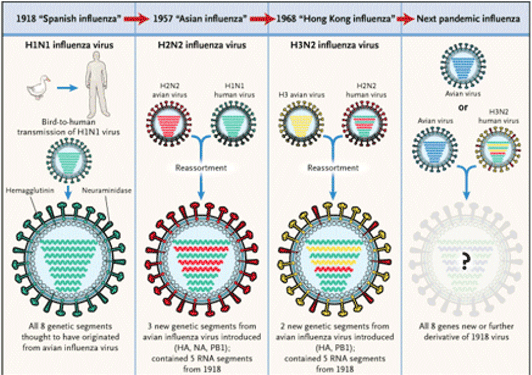Definition Of 2009 Flu Pandemic
The History of Pandemics. On June 11 2009 the World Health Organization WHO signaled that a global pandemic of novel influenza A H1N1 was underway by raising the worldwide pandemic alert level to Phase 6This action was a reflection of the spread of the new H1N1 virus not the severity of illness caused by the virus.
 Cdc H1n1 Flu Q A Flu Related Hospitalizations And Deaths In The United States From April 2009 January 30 2010
Cdc H1n1 Flu Q A Flu Related Hospitalizations And Deaths In The United States From April 2009 January 30 2010
Never have been declared a pandemic as it was not a new sub-type was not.

Definition of 2009 flu pandemic. There has been considerable controversy over the past year particularly in Europe over whether the World Health Organization WHO changed its definition of pandemic influenza in 2009 after novel H1N1 influenza was identified. An influenza pandemic occurs when a new influenza virus appears against which the human population has no immunity resulting in several simultaneous epidemics worldwide with enormous numbers of deaths and illness. While most of the sicknesses brought about by pandemic.
2009 H1N1 Pandemic H1N1pdm09 virus In the spring of 2009 a novel influenza A H1N1 virus emerged. By the World Health Organizations official tally the flu pandemic of 2009-10 killed 18449 people around the world. It rewrote the definition of pandemic A previous official definition and widely used unofficial one required simultaneous epidemics worldwide with enormous numbers of.
Of people had already been exposed to. Spanish flu in 1918 Asian flu in 1957 Hong Kong flu in 1968 and swine flu in 2009 were known pandemic which had various characteristics in terms of morbidity and mortality. Those are deaths of people who had.
This new H1N1 virus contained a unique combination of influenza genes not previously identified in animals or people. The flu gained attention in April when it appeared in California and. 1 A pandemic is defined as an epidemic occurring worldwide or over a very wide area crossing international boundaries and usually affecting a large number of people.
It was the second of two pandemics involving the H1N1 influenza strain. A Pandemic Is Declared. There has been considerable controversy over the past year particularly in Europe over whether the World Health Organization WHO changed its definition of pandemic influenza in 2009 after novel H1N1 influenza was identified.
As of October 2009 195 nations have affirmed human instances of pandemic H1N1 2009. The next influenza pandemic occurred in 2009 when a subtype of H1N1 virus spread across multiple regions of the world. Influenza virus was identified in the USA in April 2009 then it would.
Between March 2009 and mid-January 2010 more than 14140 laboratory-confirmed H1N1 deaths had been reported worldwide. It was detected first in the United States and spread quickly across the United States and the world. A current pandemic is caused by novel corona virus originated from China.
Influenza pandemic H1N1 of 2009 also called H1N1 flu byname swine flu the first major influenza outbreak in the 21st century noted for its rapid global spread which was facilitated by an unusually high degree of viral contagiousness. In January 2009 there was a small outbreak of the swine flu in Mexico City. The 2009 Swine Flu Pandemic H1N1 swept the globe lasting some 20 months.
2 The classical definition includes nothing about population. 2009 Swine Flu Pandemic Introduction A novel influenza A H1N1 infection of pig root arose among individuals in Mexico throughout the spring of 2009 and spread with voyagers around the world bringing about the principal influenza pandemic since 1968. Since 2003 the top of the WHO Pandemic Preparedness homepage has contained the following statement.
Doshi argues cogently that the definition of pandemic influenza in 2009 was elusive but does not refer to the classical epidemiological definition of a pandemic. Some have argued that not only was the definition changed but that it was done to pave the way for declaring a pandemic. WHOs original definition of a pandemic from May 1 2009 specified simultaneous epidemics worldwide with enormous numbers of deaths and illnesses 1 2 An influenza pandemic occurs when a new influenza virus appears against which the human population has no immunity resulting in several simultaneous epidemics worldwide with enormous numbers of deaths and illness.
Causing enormous numbers of deaths and illness and a significant number.
 The 3 Waves Of The 2009 H1n1 Influenza Pandemic In Thailand Based On Download Scientific Diagram
The 3 Waves Of The 2009 H1n1 Influenza Pandemic In Thailand Based On Download Scientific Diagram
 Worldwide Distribution Of Swine Flu Pandemic H1n1 2009 Map Download Scientific Diagram
Worldwide Distribution Of Swine Flu Pandemic H1n1 2009 Map Download Scientific Diagram
 Reconstruction Of A Mass Hysteria The Swine Flu Panic Of 2009 Der Spiegel
Reconstruction Of A Mass Hysteria The Swine Flu Panic Of 2009 Der Spiegel

 Phases Of Pandemic Case Definitions Of Swine Origin Influenza A H1n1 Download Scientific Diagram
Phases Of Pandemic Case Definitions Of Swine Origin Influenza A H1n1 Download Scientific Diagram
Flu Outbreak Walking The Line Between Hyping And Helping
 Influenza Definition Symptoms Treatment Prevention Britannica
Influenza Definition Symptoms Treatment Prevention Britannica
12 13 14 15 16 17 18 19 20 21 22 23 24 25 26 Review Who S Definition Of An Influenza Pandemic Developed In 2005 In Conjunction With The Development Of A Phased System To Guide The International Response To A New Influenza Pandemic Was
 A13 Influenza H1n1 Pandemic 2009 The Domestic And International Impacts Of The 2009 H1n1 Influenza A Pandemic Global Challenges Global Solutions Workshop Summary The National Academies Press
A13 Influenza H1n1 Pandemic 2009 The Domestic And International Impacts Of The 2009 H1n1 Influenza A Pandemic Global Challenges Global Solutions Workshop Summary The National Academies Press
 W H O Makes It Official Swine Flu Is A Pandemic The New York Times
W H O Makes It Official Swine Flu Is A Pandemic The New York Times
 Is This A Pandemic Define Pandemic The New York Times
Is This A Pandemic Define Pandemic The New York Times
 Dynamic Propagation And Impact Of Pandemic Influenza A 2009 H1n1 In Children A Detailed Review Springerlink
Dynamic Propagation And Impact Of Pandemic Influenza A 2009 H1n1 In Children A Detailed Review Springerlink
 Comparison 2009 H1n1 Pandemic Versus 2020 Coronavirus Pandemic Pharmalive
Comparison 2009 H1n1 Pandemic Versus 2020 Coronavirus Pandemic Pharmalive
H1n1 Influenza A 2009 Definition Demographics Description Causes And Symptoms
 Swine Flu H1n1 H3n2v Symptoms Vaccination Treatment Causes
Swine Flu H1n1 H3n2v Symptoms Vaccination Treatment Causes
 2009 Flu Pandemic Was 10 Times More Deadly Than Previously Thought Shots Health News Npr
2009 Flu Pandemic Was 10 Times More Deadly Than Previously Thought Shots Health News Npr


Post a Comment for "Definition Of 2009 Flu Pandemic"